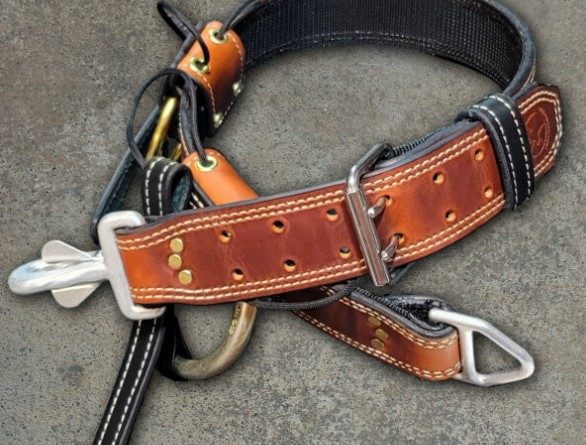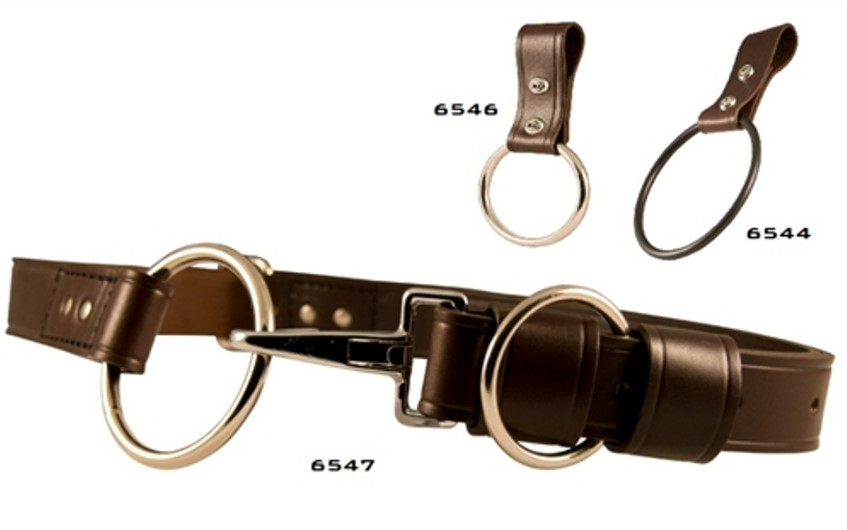
A Firefighter truck belt is specialized equipment that enables firefighters to respond swiftly and safely to emergencies. These belts are perfect for securing a firefighter while easily holding the tools and providing support. The leather-made firefighter truck belts are a good option in the market.
The strength, heat resistance and flexibility of these belts are the excellent qualities which enable these belts to withstand challenging environments. In this piece of writing will go through the significance, advantages and important factors to consider while choosing these belts.
Significance of Firefighter truck belts
Firefighter truck belts are immensely important in the field of fire and Rescue. These are useful for storing tools in an easily accessible place while working on the incident. The tools like axes, flashlights, radios, and wrenches are frequently used in fire and rescue operations.
Moreover, these belts also provide support by equally distributing the weights of tools. The adjustable straps of these belts make it easy to adjust and distribute the weight as needed. The proper weight distribution also ensures firefighters’ proper balance and mobility while moving or crawling during an emergency.
Furthermore, these firefighter truck belts give the solution by freeing the hands of firefighters. After wearing this belt, the firefighter places his/her tools in the places and moves freely as there is no need to carry any tool in the hands. This hand-free feature allows firefighters to perform complex jobs, lift injured persons, or perform any task.
Leather Firefighter Truck Belts
Due to durability and flexibility, leather remained significant in the field of firefighting for centuries. One of the primary advantages is its remarkable strength. Firefighters need reliable light weighted material with enough capacity and strength to bear the weight.
The material’s heat resistance is another required feature as a firefighter works in a hot environment, and these belts may be exposed to even flames.
Flexibility is another advantageous characteristic of leather. Firefighter truck belts must be pliable and easy to manoeuvre, enabling firefighters to move swiftly and perform their duties effectively. Leather provides the necessary flexibility without compromising durability, making it an ideal material for such belts.
Leather strength, heat resistance, and flexibility improve firefighters’ safety and efficiency. These also enable the firefighters to navigate dangerous environments while carrying essential tools- flashlights. Leather firefighter truck belts are an asset for modern firefighting professionals.
Types of Leather Used for Firefighter truck belts
Many types of leather are used for making firefighter truck belts. These include the following:
Full-Grain Leather
It is the highest quality and most durable type of leather. As the name reflects, it is made from complete grain of hide and includes the outer layer. It is famous because of its strength, abrasion resistance and resistance to harsh conditions and is the best choice for firefighters.
Top-Grain Leather
Top-grain leather is also derived from the outermost layer of the hide, but it undergoes sanding or buffing to remove any imperfections. This results in a smooth and uniform surface. Top-grain leather is still durable and offers good strength, making it a popular choice for firefighter equipment, including truck belts.
Split Leather
This type of leather is created by splitting the hide into multiple layers. Split leather is generally less durable and thinner than full-grain or top-grain leather. However, it can still be suitable for firefighter truck belts.
Synthetic Leather
In some cases, synthetic leather materials, such as polyurethane (PU) or polyvinyl chloride (PVC) leather, are used for firefighter truck belts. Synthetic leather is engineered to mimic the look and feel of genuine leather while offering specific advantages such as water resistance, easier maintenance, and cost-effectiveness. However, it may not possess the same natural strength and durability as genuine leather.

Pros and cons of different types of Leather belts
| Leather Type | Pros | Cons |
|---|---|---|
| Full Grain Leather | Quality and Durability | Expensive |
| Excellent abrasion resistance | Susceptible to water and moisture damage | |
| Resistance to harsh conditions and rough handling | ||
| Top Grain Leather | Smooth and uniform surface | May not be as durable as full grain leather |
| Good strength and abrasion resistance | Can be susceptible to water damage | |
| Balance between quality and cost | Requires maintenance to preserve its appearance | |
| Split Leather | More affordable compared to full grain and top grain leather | Less durable and thinner than other types of leather |
| Can be suitable when properly treated and reinforced | Prone to tearing or breaking under heavy stress | |
| Offers flexibility and pliability | Susceptible to water damage without proper treatment | |
| Synthetic Leather | Water-resistant and easy to clean | May lack the same level of natural strength and durability |
| (PU, PVC, etc.) | Cost-effective alternative to genuine leather | Less breathability compared to genuine leather |
| Can be engineered to have specific properties | May have a synthetic appearance and feel |
How to maintain and clean firefighter truck leather belts?
To maintain and clean firefighter truck leather belts, you can follow these general guidelines:
- Regular Cleaning: Wipe down the belt regularly with a clean, damp cloth to remove any surface dirt, dust, or debris. This helps prevent the accumulation of grime and keeps the leather looking clean.
- Avoid Excessive Moisture: Leather should be protected from excessive moisture, which can lead to damage and mould growth. Avoid exposing the belt to water or excessive humidity. If the belt does get wet, gently pat it dry with a soft cloth and allow it to air dry naturally, away from direct heat sources.
- Conditioning: Leather belts benefit from periodic conditioning to keep supple and prevent drying or cracking. Use a leather conditioner specifically designed for belts or leather goods and follow the instructions provided by the manufacturer. Conditioning helps replenish the natural oils in the leather and keeps it moisturized.
- Storage: When not in use, store the leather belt in a cool, dry place away from direct sunlight. Avoid folding or creasing the belt excessively, which can cause permanent damage. Hanging the belt or laying it flat in a drawer or box is a good storage option.
- Avoid Harsh Chemicals: Avoid using harsh chemicals, solvents, or abrasive cleaners on the leather belt, as they can damage the surface and strip away the natural oils. Stick to gentle, leather-specific cleaning products.
- Professional Cleaning: If the leather belt becomes heavily soiled or stained, it may require professional cleaning. Seek professional leather cleaners or local leather goods repair shop assistance.
Relevant applied standards on Firefighter truck belts
Firefighter truck belts, or seat belts or harnesses, are subject to various safety standards to ensure their effectiveness in protecting firefighters during emergency response operations. The specific standards applicable to firefighter truck belts may vary depending on the country or region. However, some commonly recognized standards include the following:
- NFPA 1901: The National Fire Protection Association (NFPA) standard for automotive fire apparatus outlines the requirements for various components of firefighting vehicles, including seat belts. NFPA 1901 specifies the seat belt’s design, construction, and performance criteria, ensuring they meet specific strength and durability requirements.
- ECE R14: The Economic Commission for Europe (ECE) regulation No. 14 is an international standard that sets forth safety requirements for seat belts and their vehicle anchorages. Although primarily intended for passenger vehicles, it may also apply to fire trucks and their seat belt systems.
- ISO 6683: This International Organization for Standardization (ISO) standard addresses safety requirements for vehicle seat belt assemblies. ISO 6683 provides guidelines for the design, construction, and testing of seat belts, including strength and performance criteria.
- DOT FMVSS 209: In the United States, the Department of Transportation (DOT) Federal Motor Vehicle Safety Standard (FMVSS) No. 209 establishes requirements for seat belt assemblies used in motor vehicles. While not specific to firefighter trucks, this standard sets minimum performance criteria for seat belts and their components.
- ANSI/ASSE Z359.11: The American National Standards Institute (ANSI) and the American Society of Safety Engineers (ASSE) developed this standard to address the safety requirements for personal fall arrest systems, including harnesses and lanyards. While not exclusively focused on firefighter truck belts, it can be relevant for certain aspects of safety equipment.
It’s important to note that compliance with safety standards is crucial, but local regulations and policies may also play a role in determining the requirements for firefighter truck belts. Fire departments and agencies should consult applicable regulations and standards in their jurisdiction to ensure their personnel’s compliance and safety.
Final Thoughts
Firefighter truck belts are specialized equipment that provides safety and support to firefighters during emergencies. Leather firefighter truck belts offer strength, heat resistance, and flexibility. They are significant for storing tools, distributing weight, and allowing hands-free movement. Different types of leather, such as full-grain, top-grain, split, and synthetic, are used. Proper maintenance includes regular cleaning, avoiding excessive moisture, conditioning, and appropriate storage. Compliance with safety standards like NFPA 1901, ECE R14, ISO 6683, DOT FMVSS 209, and ANSI/ASSE Z359.11. Overall, firefighter truck belts are crucial for firefighter safety and efficiency.

Hi, I am John Smit a Captain in Fire Department City of Newyork with over years of experience in the field of Firefighting and HSE. My passion for fire safety started when I was a young boy and witnessed a neighbor’s house go up in flames along with precious lives. Since then, I had dedicated my life to ensuring the safety of buildings, properties, and individuals in case of a fire and medical emergencies.

